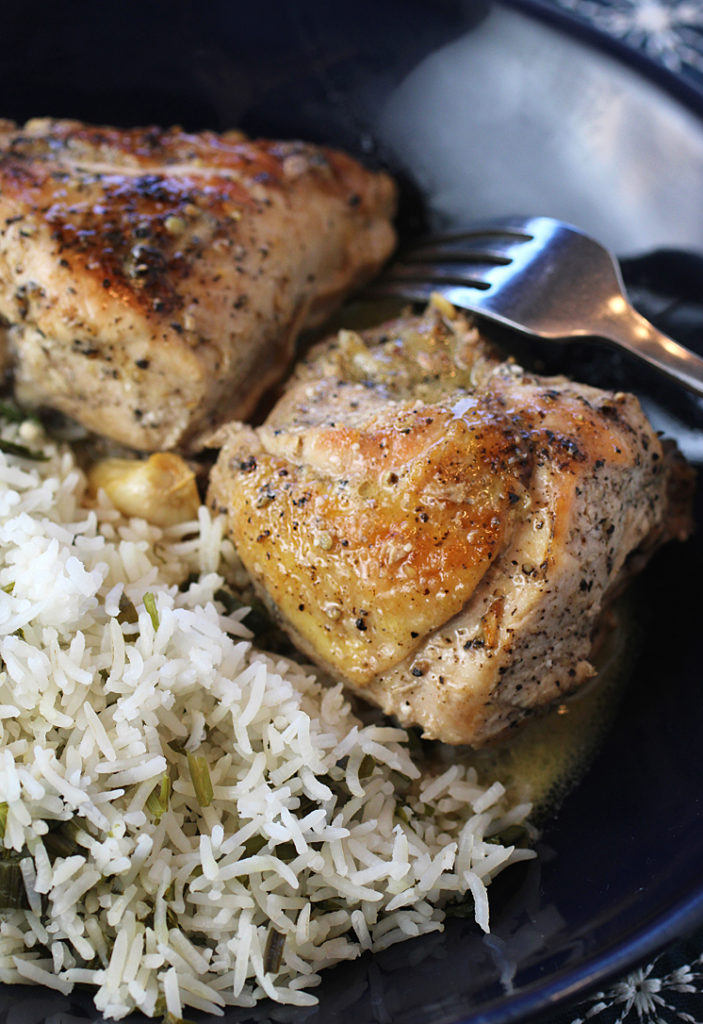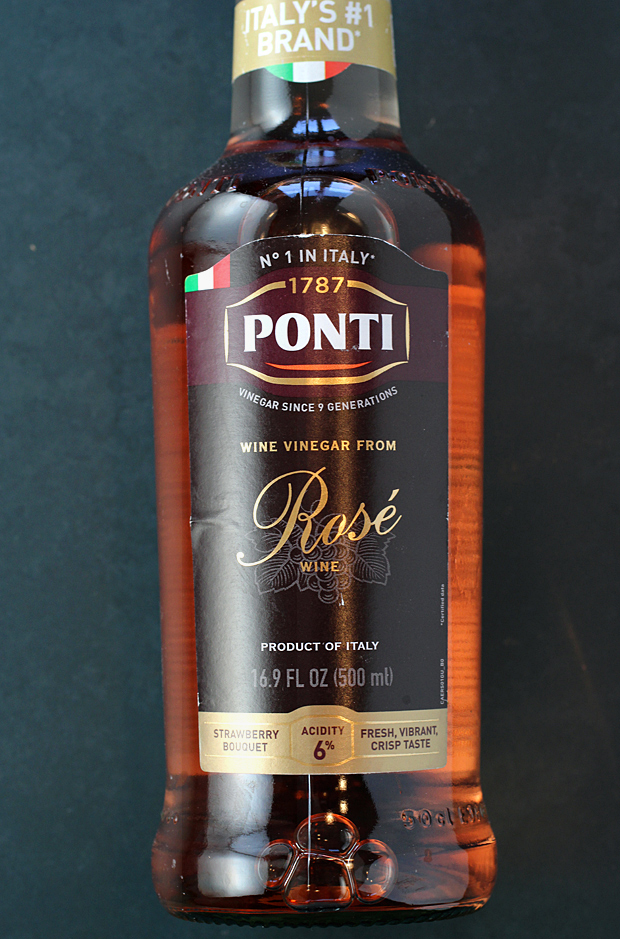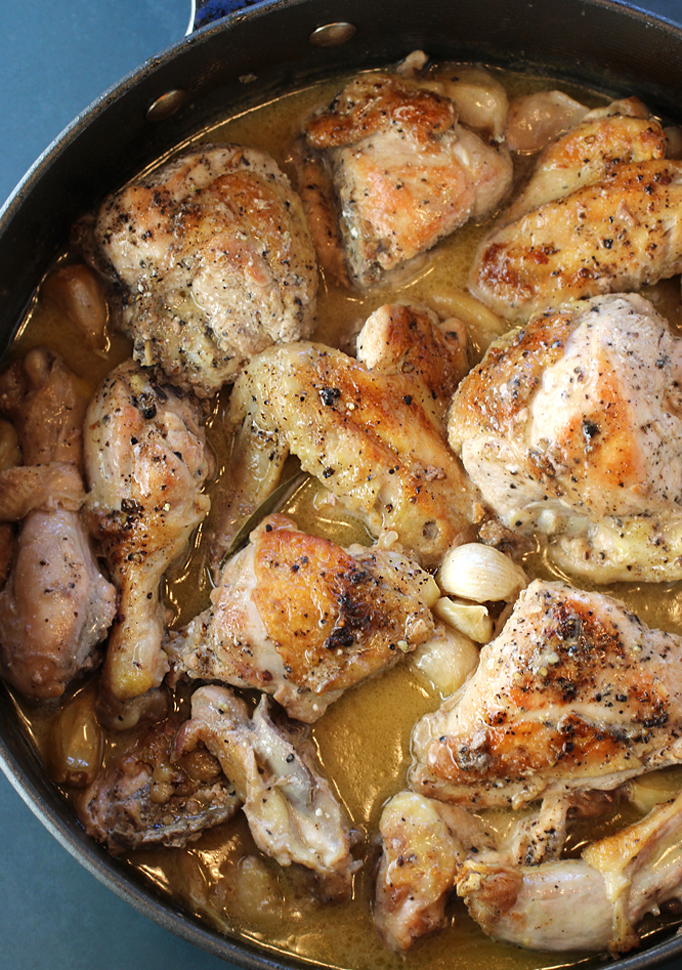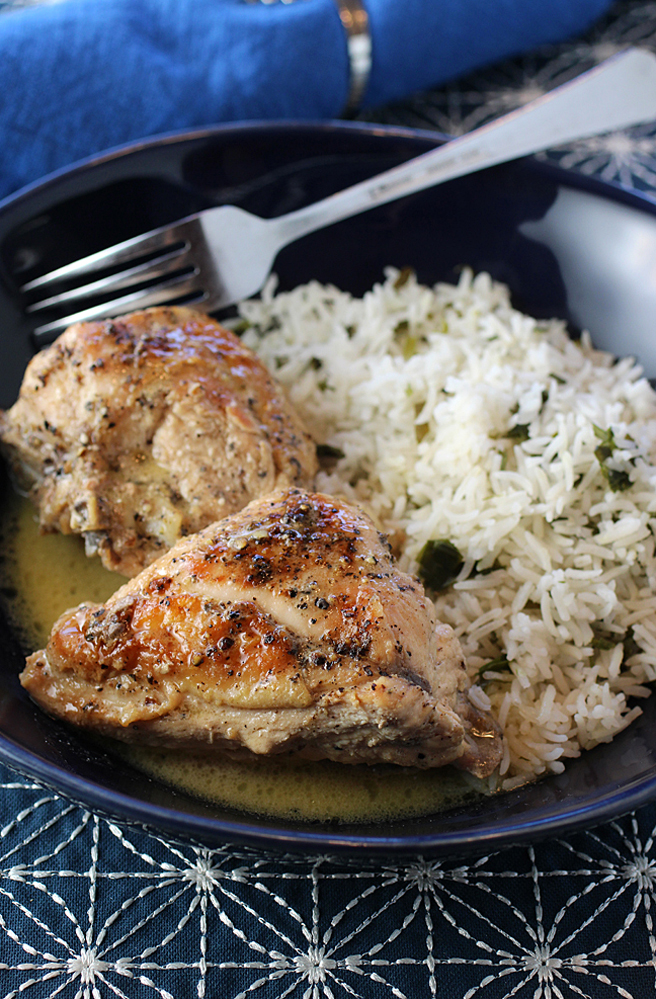Lyon-Style Chicken with Rosé Vinegar Sauce

If you were to peek inside my pantry, you’d spy upwards of 10 different vinegars at all times.
That may seem excessive, but each has its purpose and distinct flavor profile. And there’s nothing like vinegar to perk up and round out a dressing, soup, stew, marinade, sauce, and even cocktails.
So, when I was asked if I wanted to be one of the first to sample the new Ponti Rosé Wine Vinegar, I jumped at the chance.
This ninth-generation, family-owned Italian company selects local rose wine that meets its standards, then turns it into vinegar.

The result is a luminous pink vinegar that’s quite sharp yet wonderfully floral, and with a pointed strawberry note.
Ponti’s newest vinegar, it’s expected to be available on Amazon starting this week. A 17-ounce bottle is $6.99.
I’d long wanted to try a recipe by Chef April Bloomfield that was published a dozen years ago in Food & Wine magazine, which calls for an entire cup of red wine vinegar. I figured this would be the perfect vehicle to showcase this rosé vinegar.
“Lyon-Style Chicken with Vinegar Sauce” is based on a classic French dish, but one that Bloomfield amped up by adding more vinegar, so you can really taste it.
That doesn’t mean, though, that you’re in for braised chicken that will make you wince from overt sourness. Instead, the sauce is buttery and balanced, with the vinegar cooked down with chicken stock and creme fraiche that adds body and light creaminess.

Chicken pieces get seared with butter, a load of unpeeled garlic cloves, and a bay leaf in a big skillet that goes into a hot oven. The white meat pieces are removed so they don’t overcook and dry out. Then, vinegar is added to the pan that’s returned to the oven to finish cooking the dark meat.
While all the chicken pieces rest on a plate, the chicken stock is added to the pan, then left to bubble away until reduced. Then, the creme fraiche and a little more butter is added to create a velvety texture. The chicken is added back in to warm through in the now finished sauce.
Serve this dish with crusty bread or steamed rice flecked with some fresh herbs to soak up the delicious sauce that has a real concentrated poultry taste enlivened by just the right amount of bright tangy fruitiness.
The recipe instructs to remove the dozen cloves of garlic from the pot after cooking, but doesn’t say anything beyond that. You could just chuck them, but that would be a waste. Instead, serve a few on each plate to allow guests to pop the buttery-tasting cloves out of their papery skins to enjoy mashed into the rice or with forkfuls of chicken. I added that to the recipe below.
Homey yet somehow sophisticated, this recipe just might be the impetus to expand your vinegar collection.

Lyon-Style Chicken with (Rosé) Vinegar Sauce
(Serves 4)
3 tablespoons extra-virgin olive oil
One 4-pound chicken, cut into 10 pieces
Salt and freshly ground pepper
3 tablespoons unsalted butter
12 large garlic cloves, unpeeled
1 bay leaf
1 cup Banyuls vinegar, red wine vinegar or rosé wine vinegar
2 cups chicken stock
1/4 cup creme fraiche
Steamed rice, garnished with fresh herbs, for serving
Preheat the oven to 450 degrees. In a large, deep skillet, heat the oil. Season the chicken with salt and pepper, add to the skillet skin-side down, and cook over moderately high heat until browned. Add 1 tablespoon of the butter to the skillet and swirl to coat the chicken. Turn the chicken skin side up and add the garlic and bay leaf.
Transfer the skillet to the oven and bake the chicken for 8 minutes, until the breast pieces are just white throughout. Transfer the breast pieces to a plate. Add the vinegar to the skillet, return to the oven and bake the remaining chicken, basting a few times, until cooked through, 15 minutes longer. Transfer the chicken and garlic to the plate.
Add the chicken stock to the skillet and boil, scraping up the browned bits, until reduced to 1 1/4 cups, about 10 minutes. Whisk in the creme fraiche and the remaining 2 tablespoons of butter. Return the chicken to the skillet along with any accumulated juices. Simmer over moderately high heat, basting a few times, until the sauce thickens slightly and the chicken is heated through, about 3 minutes. Season with salt and pepper and serve with the herbed steamed rice.
Note: You can also serve the cooked garlic cloves with the chicken and rice, as squeezed out of their papery skins, they add a nice buttery, mellow garlicky taste.
Adapted from April Bloomfield’s recipe in Food & Wine, published May 10, 2011
Suggested pairing: Focused red Burgundy.
